 Roy Orbison was an influential American singer-songwriter and rock-and-roll pioneer whose career spanned more than three decades. He had a string of hits during the early-1960s, such as “Only the Lonely” and “Oh, Pretty Woman,” after which his career waned, driven in part by a series of personal tragedies. He made a comeback in the 1980s, forming a supergroup with Bob Dylan, George Harrison, and Tom Petty called the Traveling Wilburys. What was Orbison rarely seen in public without? Discuss
Roy Orbison was an influential American singer-songwriter and rock-and-roll pioneer whose career spanned more than three decades. He had a string of hits during the early-1960s, such as “Only the Lonely” and “Oh, Pretty Woman,” after which his career waned, driven in part by a series of personal tragedies. He made a comeback in the 1980s, forming a supergroup with Bob Dylan, George Harrison, and Tom Petty called the Traveling Wilburys. What was Orbison rarely seen in public without? Discuss
Source: The Free Dictionary
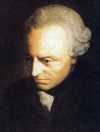 Kant was a German metaphysician who shook the foundations of Western philosophy. In his Critique of Pure Reason, Kant proposed that objective reality is known only insofar as it conforms to the essential structure of the knowing mind and that things beyond experience are unknowable. He thus concluded that the existence of God, freedom, and immortality can be neither affirmed nor denied on theoretical grounds. His system of ethics is based the “categorical imperative,” which is what?
Kant was a German metaphysician who shook the foundations of Western philosophy. In his Critique of Pure Reason, Kant proposed that objective reality is known only insofar as it conforms to the essential structure of the knowing mind and that things beyond experience are unknowable. He thus concluded that the existence of God, freedom, and immortality can be neither affirmed nor denied on theoretical grounds. His system of ethics is based the “categorical imperative,” which is what? 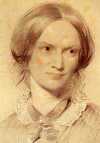 The eldest of the three famous Brontë sisters whose novels have become standards of English literature, Charlotte Brontë is best known for penning Jane Eyre, the story of a governess who falls passionately in love with her employer. Ranked among the great English novels, it addresses women’s need for both love and independence. Considered the most professional of the sisters, Charlotte endeavored to achieve financial success from the family’s literary efforts. What were her other novels?
The eldest of the three famous Brontë sisters whose novels have become standards of English literature, Charlotte Brontë is best known for penning Jane Eyre, the story of a governess who falls passionately in love with her employer. Ranked among the great English novels, it addresses women’s need for both love and independence. Considered the most professional of the sisters, Charlotte endeavored to achieve financial success from the family’s literary efforts. What were her other novels? _02.jpg) Famous for his comic portrayals of a wistful innocent with horn-rimmed glasses who blunders in and out of hair-raising situations, American movie actor Harold Lloyd was the most popular film comedian of the 1920s. He appeared in over 500 films, including many shorts, spanning both the silent and sound eras. Noted for his use of physical danger as a source of comedy, he performed his own stunts, famously hanging from the hands of a clock far above the street in an iconic scene from what film?
Famous for his comic portrayals of a wistful innocent with horn-rimmed glasses who blunders in and out of hair-raising situations, American movie actor Harold Lloyd was the most popular film comedian of the 1920s. He appeared in over 500 films, including many shorts, spanning both the silent and sound eras. Noted for his use of physical danger as a source of comedy, he performed his own stunts, famously hanging from the hands of a clock far above the street in an iconic scene from what film? 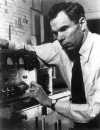 In 1940, American chemist Glenn Seaborg and his colleagues discovered plutonium. He soon joined the Manhattan Project and was instrumental in the development of the atomic bomb, which he unsuccessfully pressed President Truman not to use on civilian targets. In 1951, he and Edwin McMillan shared the Nobel Prize in Chemistry for their work on transuranium elements. During his lifetime, Seaborg held dozens of patents—among them the only patents ever issued for what?
In 1940, American chemist Glenn Seaborg and his colleagues discovered plutonium. He soon joined the Manhattan Project and was instrumental in the development of the atomic bomb, which he unsuccessfully pressed President Truman not to use on civilian targets. In 1951, he and Edwin McMillan shared the Nobel Prize in Chemistry for their work on transuranium elements. During his lifetime, Seaborg held dozens of patents—among them the only patents ever issued for what? 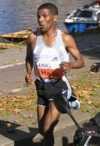 Widely considered one of the greatest distance runners in history, Haile Gebrselassie is an Ethiopian long-distance track and road running athlete. Over the course of his career, he has set more than 20 records and won numerous Olympic and World Championship titles, achieving major competition wins in outdoor, indoor, cross country, and road running races as short as 1,500 meters and as long as full marathons. In 1995, he beat the world record for the 5,000-meter run by how many seconds?
Widely considered one of the greatest distance runners in history, Haile Gebrselassie is an Ethiopian long-distance track and road running athlete. Over the course of his career, he has set more than 20 records and won numerous Olympic and World Championship titles, achieving major competition wins in outdoor, indoor, cross country, and road running races as short as 1,500 meters and as long as full marathons. In 1995, he beat the world record for the 5,000-meter run by how many seconds? 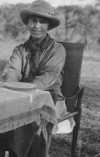 Better known by her pen name Isak Dinesen, Baroness Karen Blixen was a 20th-century Danish author who wrote primarily in English. Published in 1937, her autobiographical Out of Africa, an account of life on a Kenyan coffee plantation, was adapted into a 1985 film that won seven Academy Awards. Another adaptation of one of her stories, Babette’s Feast, was the first Danish film to win an Academy Award for Best Foreign Language Film. What diseases may have contributed to her death?
Better known by her pen name Isak Dinesen, Baroness Karen Blixen was a 20th-century Danish author who wrote primarily in English. Published in 1937, her autobiographical Out of Africa, an account of life on a Kenyan coffee plantation, was adapted into a 1985 film that won seven Academy Awards. Another adaptation of one of her stories, Babette’s Feast, was the first Danish film to win an Academy Award for Best Foreign Language Film. What diseases may have contributed to her death?  Recognized as the most important female painter of the 18th century, Vigée-Lebrun began painting portraits professionally in her early teens and went on to have a long and successful career. In 1779, she was summoned to Versailles to paint Marie Antoinette, whom she would paint at least 30 more times. At the outbreak of the French Revolution, she fled France and traveled abroad, finding acclaim and prominent sitters wherever she went. Which notable figures did she paint during her travels?
Recognized as the most important female painter of the 18th century, Vigée-Lebrun began painting portraits professionally in her early teens and went on to have a long and successful career. In 1779, she was summoned to Versailles to paint Marie Antoinette, whom she would paint at least 30 more times. At the outbreak of the French Revolution, she fled France and traveled abroad, finding acclaim and prominent sitters wherever she went. Which notable figures did she paint during her travels? 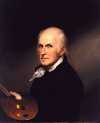 Peale was an American painter, inventor, and naturalist. After studying painting in London, he returned to America and became the country’s preeminent portrait painter. A captain in the militia during the American Revolution, he painted many portraits of military leaders. Later, he established a portrait gallery, founded the Peale Museum, and even formed the first scientific expedition in American history. Peale is probably best known for his portraits of which historical figure?
Peale was an American painter, inventor, and naturalist. After studying painting in London, he returned to America and became the country’s preeminent portrait painter. A captain in the militia during the American Revolution, he painted many portraits of military leaders. Later, he established a portrait gallery, founded the Peale Museum, and even formed the first scientific expedition in American history. Peale is probably best known for his portraits of which historical figure?